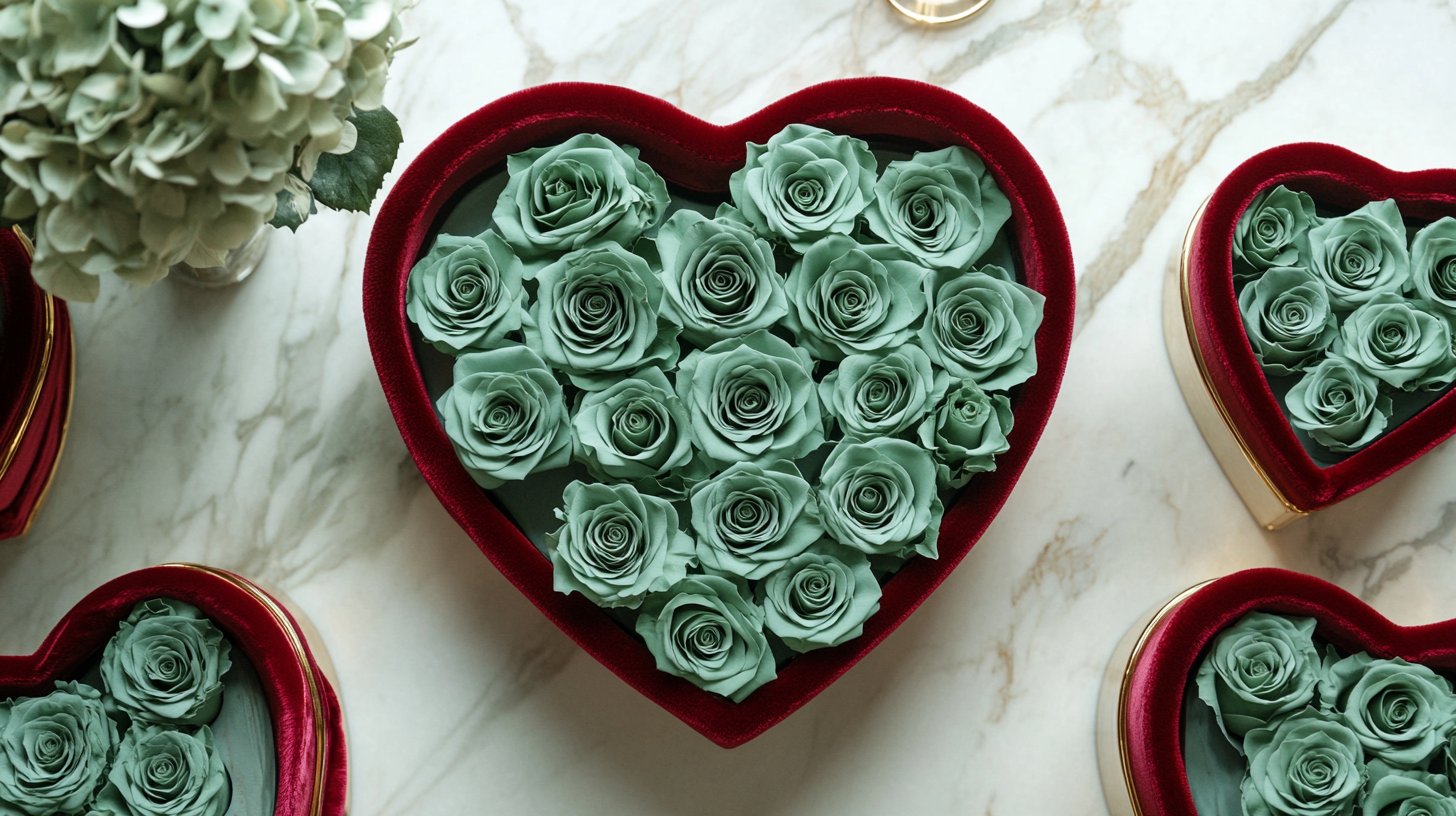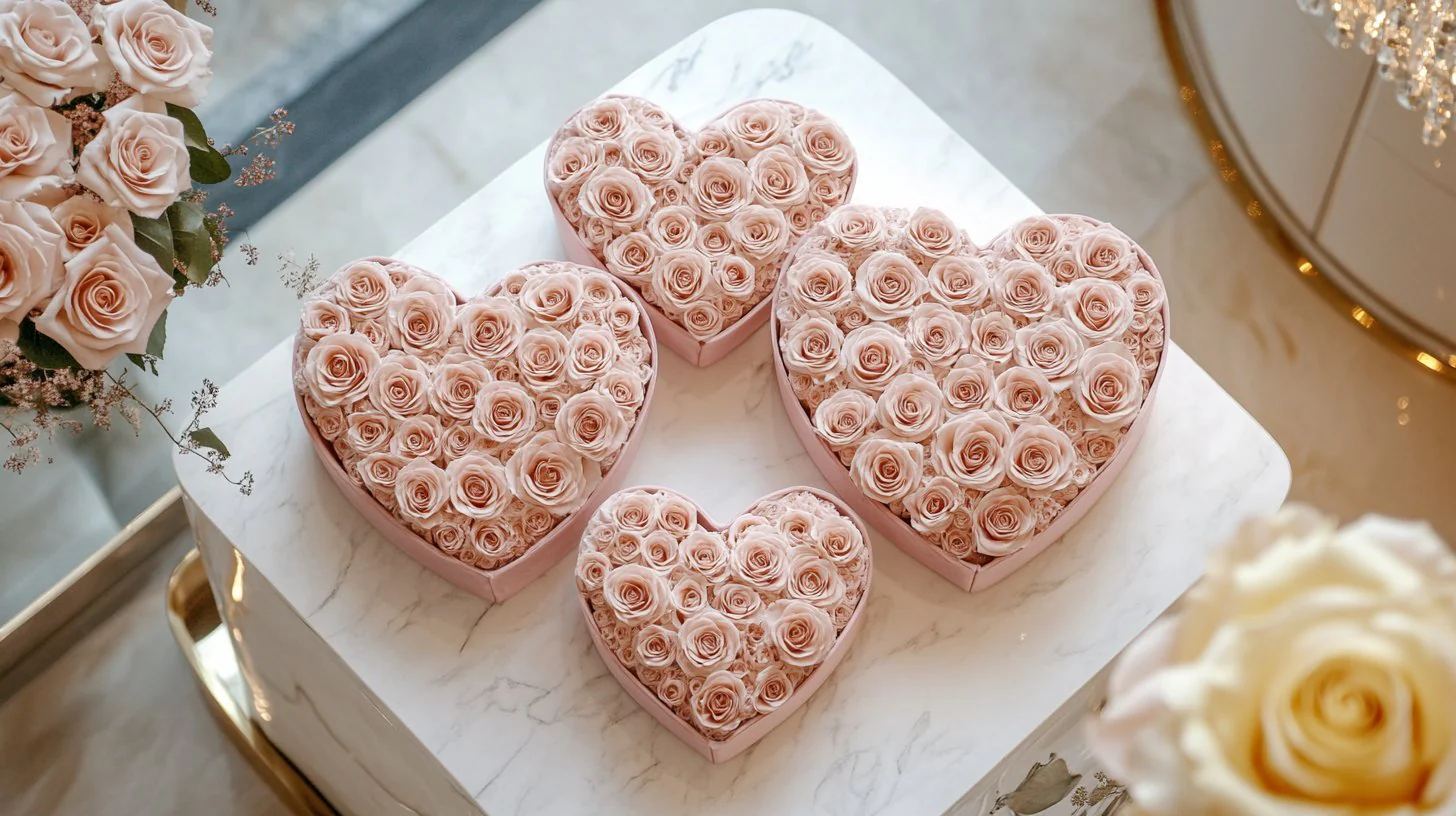
¿Son reales las rosas negras? Simbolismo de la rosa negra y guía de regalos
¿Son las rosas negras reales?
¿Son reales las rosas negras? Una pregunta que despierta la curiosidad y la intriga, atrayéndole al cautivador reino del simbolismo de las rosas y su significado cultural. Las rosas, conocidas por su belleza y fragancia, ocupan un lugar especial en diversas mitologías y leyendas, trascendiendo el tiempo y la geografía para convertirse en potentes símbolos de emoción y significado.
Imagínese desenterrar las historias ocultas tras el encanto de la rosa negra, una floración misteriosa y enigmática que ha fascinado corazones y mentes a lo largo de la historia. Desde la antigua mitología griega hasta las expresiones modernas de amor, la rosa negra tiene un peso simbólico como ninguna otra flor.
Este blog profundiza en los mitos, leyendas y representaciones artísticas que han inmortalizado a las rosas en la literatura, el arte y la cultura. Descubra el rico tapiz de simbolismo tejido en torno a la rosa negra y explore los diversos significados atribuidos a esta enigmática flor. Acompáñenos en un viaje a través del tiempo y el espacio mientras descubrimos los secretos de la rosa negra y su perdurable atractivo en nuestro imaginario colectivo.
Introducción: El encanto de Forever Roses
El encanto de las rosas ha cautivado a la humanidad durante siglos. Estas delicadas flores han dejado su huella en la historia, la literatura y el arte, simbolizando el amor, la belleza y la pasión. Las rosas Forever, un concepto que ha ganado popularidad en los últimos años, llevan el encanto intemporal de las rosas a un nivel completamente nuevo.
Las rosas eternas, también conocidas como rosas eternas, son rosas auténticas que se han conservado especialmente para mantener su belleza y frescura durante un periodo prolongado, a veces hasta un año o más. Este proceso de conservación permite que las rosas conserven su color, textura y fragancia naturales, convirtiéndolas en un regalo duradero y significativo.
A lo largo de la historia, las rosas han tenido un profundo significado cultural, con papeles destacados en civilizaciones antiguas como la griega y la romana. En la mitología griega, la diosa Afrodita, la diosa del amor y la belleza, se representa a menudo con rosas. Las historias de la pasión de Cleopatra por las rosas también contribuyen al encanto de estas magníficas flores.
En el arte, las rosas han sido inmortalizadas de diversas formas, desde intrincados frescos hasta magistrales pinturas. Artistas como Michelino da Besozzo y Jan Brueghel han incorporado rosas a sus obras, mostrando la belleza intemporal y el significado simbólico asociados a estas flores.
Ya sea la vibrante rosa roja que representa el amor apasionado, la rosa blanca pura que simboliza los nuevos comienzos o la misteriosa rosa negra que exuda elegancia y sofisticación, cada color ofrece su propia expresión única.
Acompáñenos en un viaje para explorar el polifacético mundo de las rosas, mientras nos sumergimos en los mitos, leyendas, simbolismo y representaciones artísticas que han hecho de las rosas un símbolo perdurable de belleza y amor a lo largo de los tiempos. En las siguientes secciones, desentrañaremos el simbolismo de las rosas negras, ahondaremos en la presencia de las rosas en la historia del arte y concluiremos con una reflexión sobre el perdurable legado de las rosas eternas.
El encanto de las rosas eternas reside no sólo en su atractivo estético sino también en la rica historia y simbolismo que encierran. Así pues, embarquémonos en esta exploración y descubramos juntos el cautivador mundo de las rosas.
Belleza intemporal: mitos y leyendas sobre las rosas a lo largo de los siglos
Las rosas han cautivado a la gente durante siglos con su belleza intemporal y su encantadora fragancia. A lo largo de la mitología occidental, estas exquisitas flores se han asociado a mitos y leyendas fascinantes. He aquí algunas de las historias más intrigantes en torno a las rosas:
La historia de Flora
En la mitología romana, Flora, la diosa de las flores y la primavera, desempeñó un papel importante en el origen de las rosas. Según la leyenda, Flora transformó a una ninfa sin vida en un vibrante y floreciente rosal como recompensa por su belleza y pureza. Este cuento simboliza el poder rejuvenecedor de la naturaleza y el encanto eterno de la rosa.
El amor de Afrodita por las rosas
En la mitología griega, la diosa del amor, Afrodita, se adornaba a menudo con rosas. Cuenta la leyenda que cuando su amante, Adonis, fue herido de muerte, de su sangre florecieron rosas rojas. Estas flores se convirtieron en un símbolo del amor apasionado y del deseo, asociadas para siempre a la belleza eterna de Afrodita y a sus esfuerzos románticos.
El amor perfumado de rosas de Cleopatra
Conocida por su encantadora belleza y su regia presencia, Cleopatra, la poderosa reina de Egipto, sentía una profunda admiración por las rosas. Es famosa por adornar los suelos de su palacio con pétalos de rosa y por utilizar aceites perfumados con rosas para seducir a sus amantes. La rosa se convirtió en un símbolo de lujo y seducción, reflejo del irresistible encanto de Cleopatra.
Estos cautivadores mitos y leyendas en torno a las rosas ponen de relieve su perdurable importancia en la mitología occidental. Las historias del amor de Flora, Afrodita y Cleopatra por las rosas demuestran la belleza eterna y el poder simbólico de estas encantadoras flores. Las rosas siguen encantándonos e inspirándonos, recordándonos el encanto intemporal de la creación más querida de la naturaleza.
El simbolismo y la historia de las rosas negras

Las rosas negras han cautivado durante mucho tiempo la imaginación humana con su misterioso encanto y su profundo simbolismo. Aunque las rosas negras no se dan de forma natural y a menudo se crean tiñendo o realzando el color de rosas rojo oscuro, ocupan un lugar especial en nuestro imaginario cultural.
Cultural Symbolism
Las rosas negras se asocian a menudo con significados profundos, como los nuevos comienzos, el amor apasionado y la sofisticación. Sus pétalos oscuros y aterciopelados evocan una sensación de elegancia y misterio. Estas rosas se han hecho populares entre las personas que buscan transmitir emociones profundas o añadir un elemento de exclusividad a la hora de hacer un regalo.
Diferenciación entre rosas negras y rosas de color rojo intenso
Aunque las rosas negras y las rosas de color rojo intenso pueden parecer similares a primera vista, existen algunas diferencias clave. Las rosas negras, creadas normalmente mediante técnicas de hibridación o teñido, poseen un tono más oscuro que refleja menos la luz en comparación con las rosas de color rojo intenso. Esto confiere a las rosas negras su característico aspecto ennegrecido. Las rosas de color rojo intenso, en cambio, conservan la intensidad de su color rojo sin desviarse hacia el negro.
Cultivo de rosas negras
El proceso de cultivo de las rosas negras implica cuidadosas técnicas de cultivo. Los criadores seleccionan variedades de rosas que tienen de forma natural pétalos de color rojo oscuro o casi negro. Mediante la hibridación y la cría selectiva, acentúan el pigmento oscuro y trabajan para conseguir un verdadero color negro. Aunque las verdaderas rosas negras siguen siendo raras, las rosas de color granate oscuro o rojo intenso se consideran a menudo rosas negras en la cultura popular.
El simbolismo y el significado cultural de las rosas negras siguen cautivando nuestra imaginación. Tanto si se regalan como muestra de pasión, sofisticación o un nuevo comienzo, estas enigmáticas flores transmiten una profundidad de emoción que pocas otras flores pueden igualar.

Las rosas en la historia del arte
A lo largo de la historia, las rosas han cautivado a los artistas y han servido como motivo recurrente en diversas formas de arte. Desde frescos hasta pinturas y esculturas, la presencia de rosas ha tenido un significado y un simbolismo importantes en diferentes épocas y culturas.
Renaissance Masterpieces
Durante el Renacimiento, las rosas aparecieron en las obras de artistas de renombre como Michelino da Besozzo y Jan Brueghel el Viejo. Por ejemplo, la Madonna della Rosa de Michelino da Besozzo muestra a la Virgen María sosteniendo al Niño Jesús sobre un fondo de rosas, que significan pureza y amor. Los bodegones florales de Jan Brueghel presentaban a menudo intrincados arreglos con rosas, que simbolizaban la belleza y la fugacidad de la vida.
Baroque Extravagance
En el periodo barroco, las rosas cobraron aún más protagonismo en el arte. Caravaggio, un famoso pintor italiano, incorporaba rosas a sus composiciones para evocar una sensación de sensualidad y deseo. El cuadro "Amor Vincit Omnia" representa un ramo de rosas, transmitiendo los temas del amor apasionado y la fugacidad de la belleza.
Symbolic Associations
En el ámbito del significado simbólico, las rosas desempeñan un papel vital. En las antiguas civilizaciones griega y romana, las rosas se asociaban con la diosa Venus y servían como símbolo del amor, la belleza y el deseo. En el arte religioso, las rosas representaban a menudo a la Virgen María, mostrando su pureza y virtud.
Modern Interpretations
Pasando a la era moderna, artistas como Vaslav Nijinsky y Amy de la Haye continuaron explorando el encanto distintivo de la rosa negra. A principios del siglo XX, las actuaciones de ballet de Nijinsky presentaban elaborados trajes con temática de rosas, infundiendo al escenario el encanto y el misterio de esta cautivadora flor.
Conclusion
Las rosas han desempeñado un papel destacado y perdurable en la historia del arte, simbolizando diversas emociones y conceptos a través de las culturas y los periodos de tiempo. Ya sea representando el amor, la belleza o la fugacidad de la vida, la presencia de rosas en diversas obras de arte evoca un sentido de belleza atemporal y asociación cultural. La exquisita variedad de representaciones de rosas en diferentes formas artísticas sirve como testimonio del perdurable encanto de la reina de las flores.
Conclusión: El legado perdurable de Forever Roses
Las rosas han cautivado a la humanidad durante siglos, erigiéndose como un símbolo de belleza atemporal y significado cultural. Desde la mitología antigua hasta el arte moderno, el encanto de las rosas es innegable.
La literatura y el folclore han tejido innumerables leyendas en torno a las rosas, convirtiéndolas en parte integrante de la mitología occidental. Las historias de Flora, la diosa de las flores, y Afrodita, la diosa del amor, ponen de relieve el protagonismo de las rosas en la antigua civilización griega. El amor de Cleopatra por las rosas es legendario, lo que consolida aún más el lugar de la rosa como reina de las flores.
Pero es la rosa negra la que tiene un encanto especial. Aunque las rosas negras no se dan de forma natural, se crían para transmitir una sensación de exclusividad y misterio. Estas rosas simbolizan los nuevos comienzos, el amor apasionado y la sofisticación. Su oscuro significado histórico evoca una sensación de intriga y singularidad.
Más allá de la literatura, las rosas también han dejado una huella indeleble en el mundo del arte. Artistas como Michelino da Besozzo y Jan Brueghel plasmaron la belleza de las rosas en sus pinturas, mientras que en esculturas y frescos las rosas ocupaban un lugar destacado. En el siglo XXI resurgió el interés por los arreglos florales de lujo, con diseñadores florales como Amy de la Haye creando exquisitos conjuntos de eternidad.
En conclusión, el legado perdurable de las rosas de siempre reside en su rica historia. Las rosas han trascendido el tiempo y la cultura, pasando de las civilizaciones antiguas a la época victoriana y más allá. Su significado simbólico, ya sea la pasión de una rosa roja o la elegancia de una rosa negra, sigue resonando en la gente. Las rosas serán siempre apreciadas por su belleza, su significado y las emociones que evocan.




















